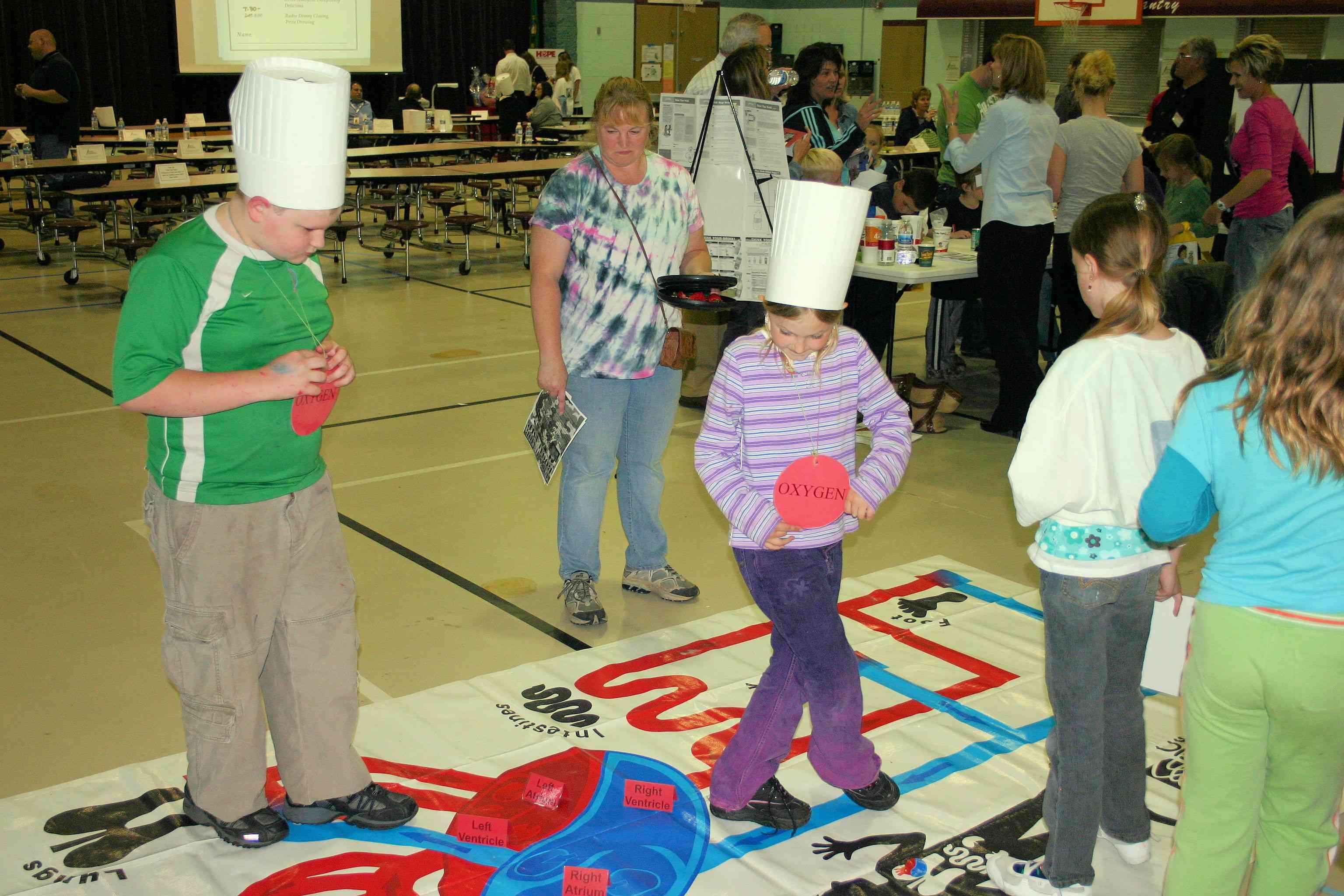 This week’s spotlight shines on the Kids Take Heart program offered by The Hope Heart Institute, an organization in Bellevue, Washington that focuses on cardiovascular disease prevention.
This week’s spotlight shines on the Kids Take Heart program offered by The Hope Heart Institute, an organization in Bellevue, Washington that focuses on cardiovascular disease prevention.
Program Basics
Kids Take Heart (KTH) is a health and fitness curriculum that includes anatomy, fitness, nutrition, stress and goal-setting. It was developed and piloted by certified teachers in nearly 20 districts and over 60 schools and 650 classrooms. KTH was designed as a tool to equip children in third, fourth and fifth grades to make lifestyle choices that promote fitness, health and wellness and lessen the likelihood of cardiovascular disease.
An online training component provides graduate continuing education credits or clock hours for teachers, and allows teachers to schedule a curriculum kit (including all lesson materials) for two months. After the program is completed, students will be able to:
• Identify components, functions, and diseases of the cardiovascular system.
• Recognize and evaluate risk factors, warning signs, and prevention strategies (i.e. healthy eating and active living) for cardiovascular disease.
• Create and implement a personal wellness plan targeting nutrition and physical activity.
Kids Take Heart also involves student health ambassadors promoting heart health information among families and the greater community.
In addition to emphasizing 60 minutes or more of physical activity daily, the KTH fitness unit helps students integrate active lifestyles, the FITT (frequency, intensity, time and type) principle and components of health-related fitness (i.e. flexibility, muscular strength, muscular endurance and cardiorespiratory endurance). Throughout the unit, students participate in a series of physical activities and calculate their median pulse. This helps them determine which physical activity level they fall within most days of the week so they can determine individual daily amounts. In the end, students communicate the concept of energy balance – the intake of quality foods in the right quantity expended by physical activity.
Teachers can implement the program during PE classes, in various grade level classrooms, or some combination of the two. KTH could also be used in an after-school program, through the local Parks & Recreation Department or Boys & Girls Clubs. The program incurs little to no cost for school districts (or other venues).
Measuring Success
Teacher evaluations and student health logs determine the impact of the program. The evaluations provide information on the structure and content of training, appropriateness of curriculum, ease of use with kit materials as well as the total number of students reached. Student health logs show nutrition and physical activity goals that students set, as well as their progress in reaching their goals over a two week period.
Challenges
Carly Meiser, CHES, serves as the Education and Community Outreach Assistant for The Hope Heart Project. When asked about program challenges, she said, “With school budget cuts, the pressure of standardized tests, and so many programs competing for time within the school day, health and physical education programs are either being pushed to the back burner or off the burner entirely even as the number of children who are overweight or obese rises.” This is likely a challenge that is echoed among school-based programs nationwide.
Lessons Learned
Ms. Meiser shared that flexibility has been the program’s key to success, “We piloted the original program several years ago, and continue to modify it for improvement based on feedback and changing needs of diverse populations. One tip would be to create a program that can be altered to meet different needs. Having a “menu” of items for folks to select from helps us piece together what a group needs most.”
According to Ms. Meiser, KTH can be used to support health and physical activity in the community by allowing kids to be health ambassadors promoting what they learned throughout your program while developing advocacy skills (perhaps at a community health event). The program can equip families with sound information and spur healthy changes within households.
What are some other creative ways that student ambassadors could be used to affect change in their communities? Share your thoughts & experiences by submitting a comment, below.